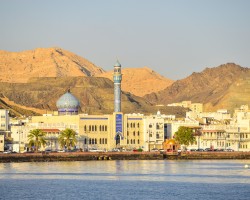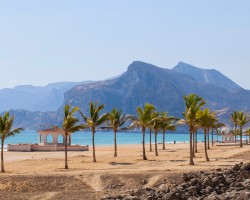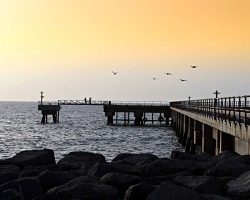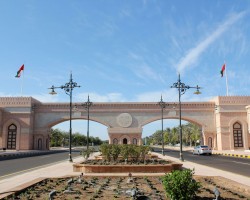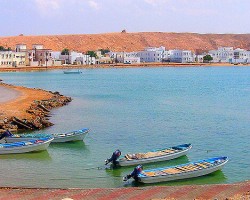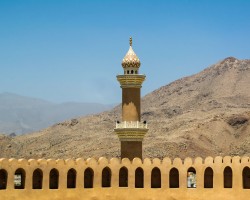Best time to go to Oman for a perfect weather and where to go?
When is the best time to go to Oman?
In general, the best time to visit Oman is from August to May. However, to avoid the extreme heat, it is ideal to go there between November and April. During this period, temperatures hover around 30°C, both in the North and the South. Along the coast, the heat is quite bearable, with few rainfalls and mild nights. In the mountains, this rainy season may bring some showers.
In addition to numerous cultural discoveries, the Sultanate of Oman is an ideal destination for lazing on the beaches around Muscat. If you wish to indulge in diving or snorkeling, prioritize the months of April and October, when visibility is at its best. In winter, between December and February, the sea can be a bit rough and the water murky.
When is the best time to visit Oman to avoid suffering from the heat? The winter months, from December to February, are the most pleasant with maximum temperatures of 24°C in the north of the country and 28°C in the south. Perfect for escaping the European gloom! This period is ideal for hiking: the weather is great and you can explore sensational landscapes in the best conditions. For the evenings, remember to bring something to cover up, as temperatures can be a bit cool.
If you are traveling to Oman in June and July, opt for the far south of the country. In places like Salalah, for example, the weather is favorable with maximum temperatures rarely exceeding 35°C.
If you are on a tight budget, know that the most expensive months to fly to Oman are April, July, and August. On the contrary, between September and November, prices and on-site attendance are reasonable. December being the peak season, it is advisable to book your accommodations and activities well in advance to travel with peace of mind.
Where and when to go based on the weather?
North of Oman
Muscat, Khasab, Sohar...
South of Oman
Salalah, Masirah, Sur...
To get all the information about the climate and weather in Oman for a specific month, click on the corresponding link below:
Oman in january Oman in february Oman in march Oman in april Oman in may Oman in june Oman in july Oman in august Oman in september Oman in october Oman in november Oman in december
Best time to travel to Oman by cities
Climate and Weather in Oman
The Sultanate of Oman is a country in the Middle East located on the Arabian Peninsula. It is bordered by the Gulf of Oman and the Arabian Sea, but it also shares land borders with the United Arab Emirates to the north, Saudi Arabia to the west, and Yemen to the southwest.
Overall, the climate in Oman is hot and dry desert, but there are some areas with a more Mediterranean climate, such as around Muscat or in the eastern part of the country. In the south, there is a tropical influence with the arrival of monsoon remnants in summer, between June and September.
The weather in Oman is characterized by two distinct seasons and does not have intermediate seasons:
- Summer lasts for eight months, from March to October. The heat is stifling, with temperatures reaching around 45°C inland and hot, dry winds that can be a major inconvenience.
- Winter is much shorter, lasting from November to February. The climate is ideal to enjoy all the beauties of the country!
Surprisingly, and unlike other desert regions, the Sultanate of Oman has a relatively high humidity rate, although rainfall is low. In addition, the temperature difference between day and night is not significant, and nighttime temperatures remain quite high for the region, with minimums above 20°C throughout the year.

Climate in northern Oman
During the summer, between June and September, is a period to absolutely avoid if you plan to visit northern Oman. During the day, the average temperature is 45°C and can even reach up to 50°C in July. At night, it cools down, but the lows remain very high at around 35°C at the coolest. Traveling in these conditions can be hellish, especially as precipitation during this period is very low, if not non-existent.
The rest of the year, between October and May, the north of the country is much more welcoming. From Buraimi to Masirah, temperatures are warm but pleasant, and precipitation is low. In Muscat, the capital, the wettest month is November, but it's important to note that there are only one to two days of rain in the whole month! If you venture into the mountains, you will feel a welcome coolness, and some nights can even be cold. On the coast, temperatures range between 23 and 36°C between November and April. In May and October, it gets hotter, but it remains bearable, especially if you plan to relax by the sea.
Climate in southern Oman
In the south of the country, temperatures have less variation than in the north, and the city of Salalah, in Dhofar, rarely experiences extreme temperatures. Consequently, the climate in this part of Oman is mild all year round.
The rainy season occurs from May to August, peaking in September. Rainfall remains relatively low, but the air is humid. During this period, the average temperature is 28°C at night and 39°C during the day, with the thermometer rarely exceeding 40°C.
During the dry season, from September to April, precipitation is extremely low, and temperatures are 2 or 3 degrees lower compared to the summer period. You can swim at your leisure in water ranging from 24 to 31°C depending on the time of year.
Temperatures and rainfall in Oman
On these 3 graphs, we present the evolution of temperatures of Oman and month-by-month rainfall for the cities of Muscat, Salalah, Khasab, Masirah and Sohar, as well as the month-by-month sea temperature for coastal cities.
Peak visitor numbers and tourist seasons in Oman
Find out when Oman has its high tourist season (the period when the influx of tourists is highest) and off-peak tourist season using our data and figures.
Tourist seasons in Oman
The months with low numbers of tourists are: March, April, May, June, July, September, October and November. The number of visitors to Oman is high in: January, February, August and December.
- Very low season in Oman: May and June.
- Low season in Oman: March, April, July, September, October and November.
- High season in Oman: January, February and August.
- Peak season in Oman: December.
Figure: Visitor index for Oman month by month
Average price for flights to Oman
A return flight between London and Muscat is generally cheaper if you go in november ($ 569 on average): this is the best time for travellers on a tight budget. In contrast, you may end up paying $ 282 more for your airline ticket to Muscat if you go in august.
Where to go in Oman?
This table allows you to see the maximum temperature for each city and our opinion on the weather month by month (see colour legend below the table).
| Cities | jan. | feb. | mar. | apr. | may | jun. | jul. | aug. | sep. | oct. | nov. | dec. |
| Muscat | 76°F | 79°F | 85°F | 92°F | 99°F | 101°F | 99°F | 97°F | 95°F | 94°F | 85°F | 79°F |
| Salalah | 81°F | 83°F | 86°F | 90°F | 94°F | 94°F | 86°F | 86°F | 88°F | 90°F | 88°F | 83°F |
| Khasab | 74°F | 74°F | 77°F | 85°F | 90°F | 95°F | 95°F | 95°F | 94°F | 90°F | 83°F | 76°F |
| Masirah | 77°F | 77°F | 83°F | 88°F | 90°F | 90°F | 85°F | 83°F | 83°F | 86°F | 83°F | 79°F |
| Sohar | 76°F | 79°F | 85°F | 92°F | 99°F | 101°F | 101°F | 99°F | 97°F | 94°F | 85°F | 77°F |
| Sur | 77°F | 81°F | 88°F | 95°F | 103°F | 103°F | 101°F | 99°F | 99°F | 95°F | 86°F | 79°F |
| Buraini | 76°F | 81°F | 88°F | 97°F | 106°F | 112°F | 113°F | 112°F | 106°F | 99°F | 86°F | 79°F |
| Nizwa | 74°F | 77°F | 85°F | 94°F | 99°F | 104°F | 104°F | 103°F | 99°F | 92°F | 83°F | 76°F |
Legend:
perfect weather
good weather
tolerable weather
bad weather
About Oman
What can I do in Oman?
Beaches / swimming
Nature and countryside
Culture and heritage
Sports
Family travel
Crafts / shopping
Gastronomy
Nightlife
Is this weather information for Oman reliable?
Climate data for Oman has been gathered every day since January 2009. The analysis of these meteorological data for Oman allows us to determine the average for each month in Muscat, Salalah, Khasab, Masirah, Sohar, Sur, Buraini and Nizwa.
So yes: this data is reliable except in cases of temporary climate disruption in the region.

